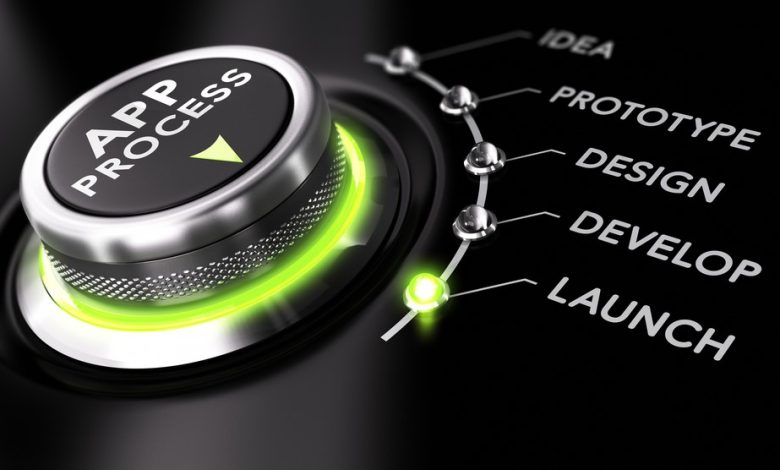The 9 Steps of Mobile App Development: A Comprehensive Walkthrough

You awake one morning with a mind-blowing concept for a mobile app; you are aware that this is the most incredible thought that has ever occurred to you; you are also aware that your app concept has the potential to astonish a sizable number of individuals; what should you do next?
The encouraging news is that it’s off to a solid beginning. You are welcome to put your faith in chance, but we will walk you through the proper way to build your app.
Let’s have a look at our comprehensive guide to the process of developing mobile apps, in the event that you are considering creating one with a progressive mobile app development company. In order to make the comprehensive guide to the mobile app development process more understandable, we have divided it into nine fundamental elements.
The Primary Steps Involved in the app Development Process
1. Validate the Concept
In order to ensure that you are not wasting your time and effort or committing yourself to a flawed idea in the process of moving forward, you should first consult with yourself and ask the questions listed below.
Function of the App: What are the benefits of developing a mobile app? Is it something that your organization cannot function without, really? Is the content of your proposal suitable or a good match for the requirements of your firm or the people you intend to reach? Do you have the necessary financial resources to get the word out?
Which of these demographics best describes your ideal customer? Who are the most likely people to buy?
What are the app’s most important functions and features? Do you think is the most compelling feature of your app? What are the advantages of downloading and utilizing your app? How do you plan to differentiate yourself from others?
Analyzing the Competitors Do you have any major rivals in the market? Do they offer something that’s analogous? If you believe that your solution to the problem is better than theirs, does it also surpass theirs?
Investing in an App: Creating an app will require a financial investment, in addition to your time and work. Are you all set?
When will you begin advertising your app, and how will you do it? How do you intend to promote the first five hundred people to use your service?
2. Market Analysis
Now is the time to finish the part of your quest that is the most important. Research on the market reveals the true need or interest of the target market; as a result, you may need to modify your concept, and the study may be able to provide you with a clear list of requirements that will assist you in prioritizing your work.
3. Create a Wire-frame
When you have finished compiling your list of potential ideas, the next step is to use wire-frames to give those ideas some form. A wire-frame is similar to a blueprint in that it lays out the structure of your program. Both the outward appearance and the overall experience of using your application will be showcased. Additionally, it will help you gain an understanding of the functionality and design of the application.
The primary purpose of the app’s wire-frames is to describe the theory that the team should follow. Programmers can also make use of it as a reference or a manual for their work.
Read about the best mobile app development trends
4. Pick a Distribution Method
Now that we’ve gone over all the mobile app development platforms, we’ll help you choose the one that’s best for your needs. There are three distinct paths one might take in the realm of development:
Native App: Developers can create applications for certain platforms such as Android and iOS by making use of the development languages and tools available to them. Here you could also broach the question of whether you want to migrate to Flutter with your legacy application.
Cross Platform: Mobile app that is compatible with a variety of operating systems, including iOS, Android, and Windows Phone 8 They operate in the same manner as native apps and may be downloaded from any app store.
HTML5 Web App: HTML5 Web Apps are mobile-optimized web-pages that give the impression of being native applications and operate in the browser of the mobile device. The user experience and the number of features provided by this cross-platform web app are both improved. An outstanding alternative in the event that the app does not agree with it or in the event that the end app will not download it for any other reason.
5. Development
If the structure of your mobile app design passes the usability test, it is time to provide your dream project a proper foundation. This process features both If the structure of your mobile app design passes the usability test, it is time to provide your dream project a proper foundation. This process incorporates both the coding of your application as well as the application’s actual implementation. Building a mobile application that can be installed and tested is one of the stages of developing a mobile app. These stages include tasks such as establishing an appropriate development environment, writing various parts of the code. Completing preliminary testing, and building the mobile application itself.
In order to complete a single development project, one would need to do programming in addition to preparing the environment for development. A typical mobile app has three parts: a back-end, application programming interfaces (APIs), and a front-end. It is common practice to carry out development in stages. And you should anticipate that your developer will provide you with interim builds that you may run on your device.
- Technology on the Back End or Servers
When your mobile app establishes a connection to a network. Database and server-side objects become critically important to the process of enabling the app’s functionality. If you are using an existing back-end platform. You may find that some modifications to the platform are required in order to enable the essential mobile app capabilities. It is absolutely necessary to configure and test the server-side objects that were created during this stage.
- The Application Programming Interface (API).
An application programming interface, or API, is a collection of programming tools and standards (application programming interface). It explains how the different software components communicate with one another. This programming interface can also be utilized when developing graphical user interface (GUI) components.
- The front end of the mobile app.
Users of your app will interact with the front-end, which is also commonly referred to as the “client-side” programming. When you visit a web-page, a web application, or a mobile app. It implements the required structure, design, animation, and behavior that you see on the screen. This is what you see when you look at it.
You won’t need the assistance of any professionals. If you construct your app with the help of the many instructions that are now available. It’s also possible to commission the design work to be done by an app development company or an independent developer.
6. Make Changes and Run Tests on Your app
If a code review is performed at an early stage during the development process. There will be no major issues left that need to be fixed. The following is our development process, which includes reviewing the code as one of the usual steps.
Once you have an application that is both aesthetically pleasing and functionally sound. It is time to carry out a final usability test with additional staff members. It is time to conclude your product at this point, regardless of whether you discover problems that you had not seen earlier in the process.
7. Create a Beta Version of Your App
The release of a beta version of any app has the potential to entice early adopters. Which is an essential stage in the process of making your mobile app successful. The early adopters of your app supply a wealth of information on the positives and negatives of the product. You can also use their comments and ratings. To get a better idea of how well the app is received and how much demand there is for it. The reputation of your mobile app and the size of its user base will both improve as a result of this form of word-of-mouth promotion.
8. Distributing Your app to Customers
You are the one who conceived of the idea, put it through testing, and created the app. It is time to post it to either the Apple App Store or the Google Play Store at this point.
9. Post Launch Activities
The second stage, which is also the most important one, is to advertise your mobile app after you have already published it. If your clients are unaware that your company has an app, there is no way for them to download it. Making videos that are both engaging and informative that demonstrate. How people can use your app can be a good idea if you want to spread the word about it. And persuade others to give it a try. In addition, do not underestimate the power of social media. Utilize all available digital channels in order to communicate with individuals from all over the world. It will provide customers a sneak peek inside your app and highlight the important features that are likely to make life easier for them.
In Conclusion
The process of designing a mobile app can be frightening and time-consuming. However, if you put in the effort to do it well, it can be a really gratifying process. This is the step-by-step process for designing mobile apps in a sequential order that is utilized by established mobile app development services providers. We sincerely hope that this article on mobile app development has provided you with the knowledge necessary to comprehend all of the components.





